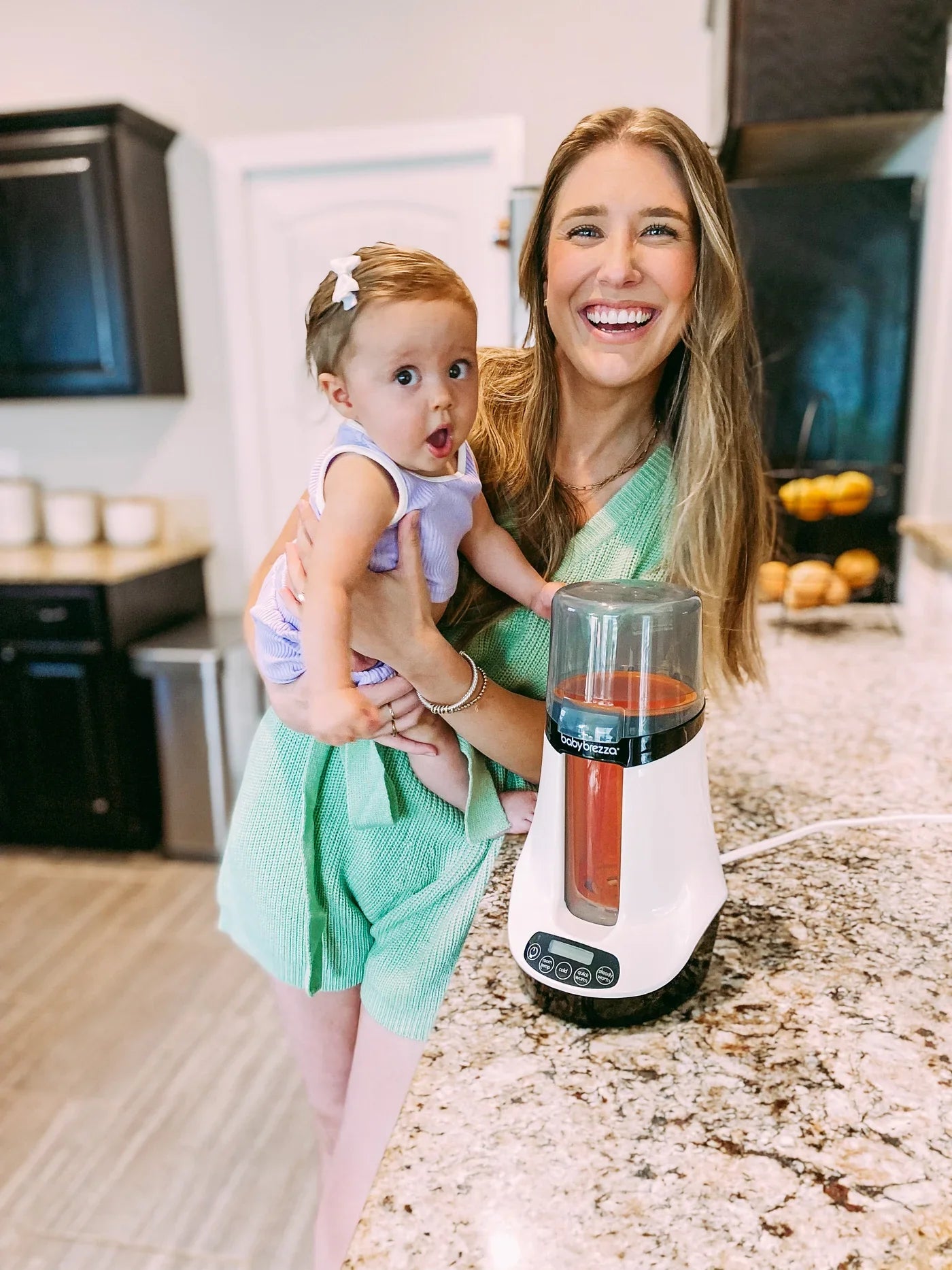At some point in a breastfeeding mom’s journey, it will come time to feed your baby pumped breast milk -- and it is essential to properly store and warm your pumped milk to maximize its nutrition - and to make sure it’s safe for your baby to drink. Learning the proper breastmilk storage guidelines will help keep your baby safe, healthy, and growing up full of the freshest nutrients!
We know the rules can get confusing -- so we asked our friends at Tinyhood, who offer a FREE online course Breastfeeding 101: From Prenatal Prep to Pumping, to break down the 5 most important storage and warming rules. Use these breastmilk storage tips for as long as you’re still regularly pumping, and your little one is guaranteed the healthiest, freshest feeding times, every time!
#1: You don’t need to refrigerate your milk right away
On a countertop, no more than 4 hours is optimal but up to 8 hours is acceptable under clean conditions + moderate temps. Remember, warmer temperatures are associated with faster bacterial growth. If you’re on-the-go, you can store your milk in a cooler bag with ice packs for up to 24 hours. Just be sure the container is well-sealed to prevent contamination. When practicing proper breastmilk storage, your next feeding time should always be the biggest priority, in order to keep freshness first.
#2: If saving the milk for longer than a few hours, opt for the fridge or freezer
Breastmilk storage tips don’t always revolve around freshly pumped milk– knowing how to properly store and thaw frozen breast milk is key, too! In the refrigerator, no more than 4 days is optimal, but the milk can be stored for up to 8 days under extremely clean conditions. If freezing your milk, 6 months is optimal, but up to 12 months is acceptable. Note that frozen milk is safe from bacterial contamination indefinitely, however the quality of stored breast milk may diminish after this 6-8 month period.
#3: Pack it small, and store it in the back
Proper breastmilk storage can come down to the small details– even down to how and where you freeze it! Since infants generally eat 2-4 ounces at a time, freeze in small amounts to minimize waste. When packing your breast milk for the freezer, leave a little room at the top of the bag or container to allow for expansion. And make sure to store your milk in the back of the fridge or freezer to prevent intermittent rewarming due to the freezer door opening.
#4: Don’t mix milks of different temperatures
If you’re wondering what to do with warmed breast milk, remember to keep different temps separate– fresh, frozen, or reheated! You don’t want to add warm, freshly pumped milk to milk that’s already in the refrigerator. Instead, put that milk in the fridge separately to cool it down first, then you can combine it with already chilled breast milk.
#5: If warming, use a warm water bath
If you are warming your breast milk, you should NEVER use a microwave, as it can destroy nutrients in the milk and create hot spots which can burn a baby’s mouth. Breast milk should always be carefully warmed with a warm water bath. An easy way to safely warm milk is with a water bath bottle warmer, such as the Baby Brezza Safe + Smart Warmer. Most other warmers use steam heat which is too hot and destroys the proteins in breastmilk.
How long does breast milk last after warmed?
After you’ve heated your breast milk to the optimal temperature, keep in mind that warmed breast milk only lasts about 2 hours, and that it’s best to use it for feeding time before the 2 hour mark.
Can you save breastmilk after it has been heated?
If you’re warming breastmilk from the fridge or freezer, it is generally recommended not to re-refrigerate or refreeze it. This maintains a level of freshness and nutrients that work best and are healthiest for your growing little one.
While nursing can be one of the most challenging parts about becoming a new parent, there are definitely some ways you can prepare before your baby is born to make things a little less overwhelming in those early days and weeks of the newborn phase. Tinyhood’s FREE online course Breastfeeding 101: From Prenatal Prep to Pumping sets you up for success from Day 1, and covers everything you need to know including how to establish and build your milk supply, tips for troubleshooting common challenges, as well as how to pump and store breast milk.

